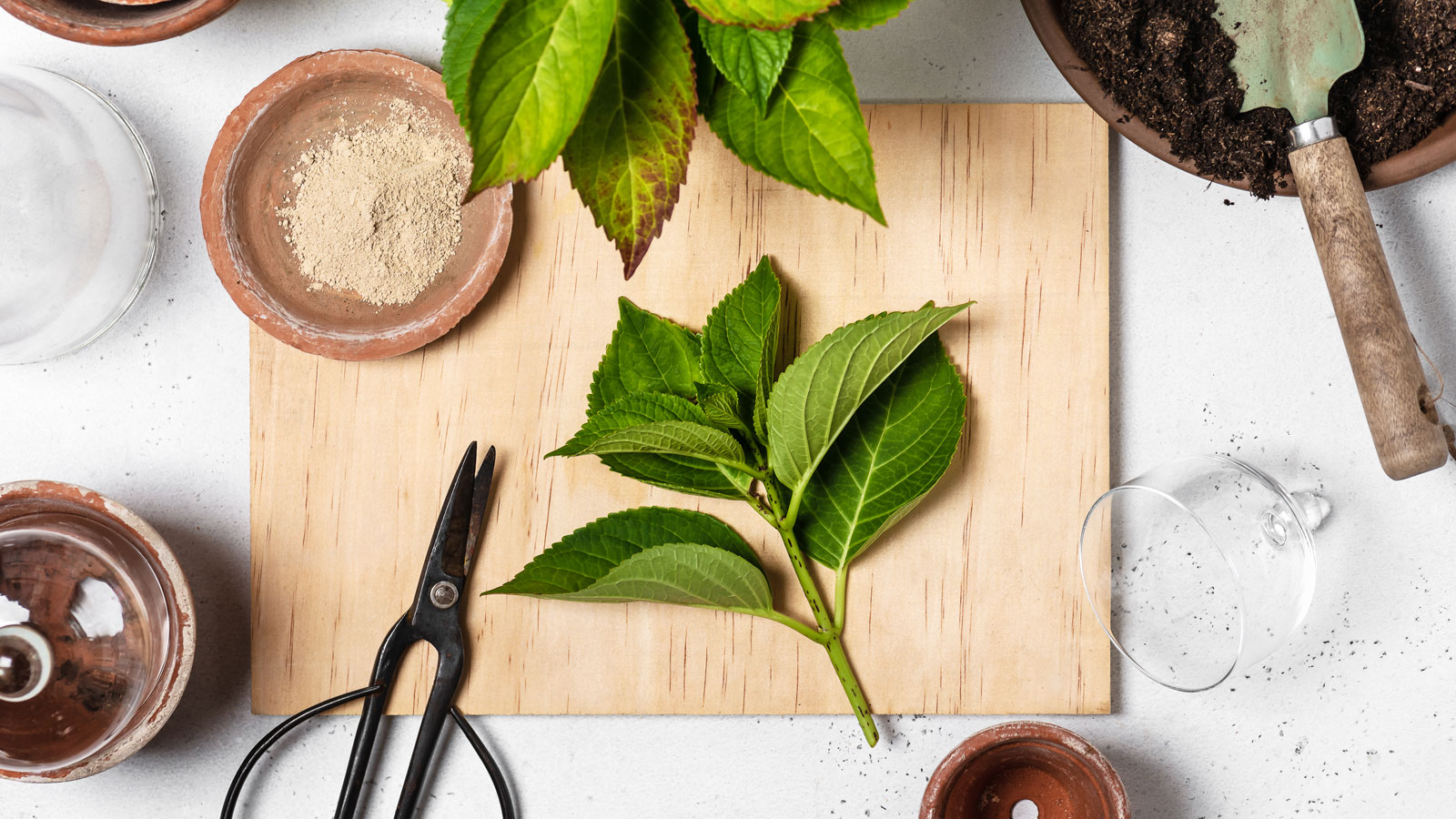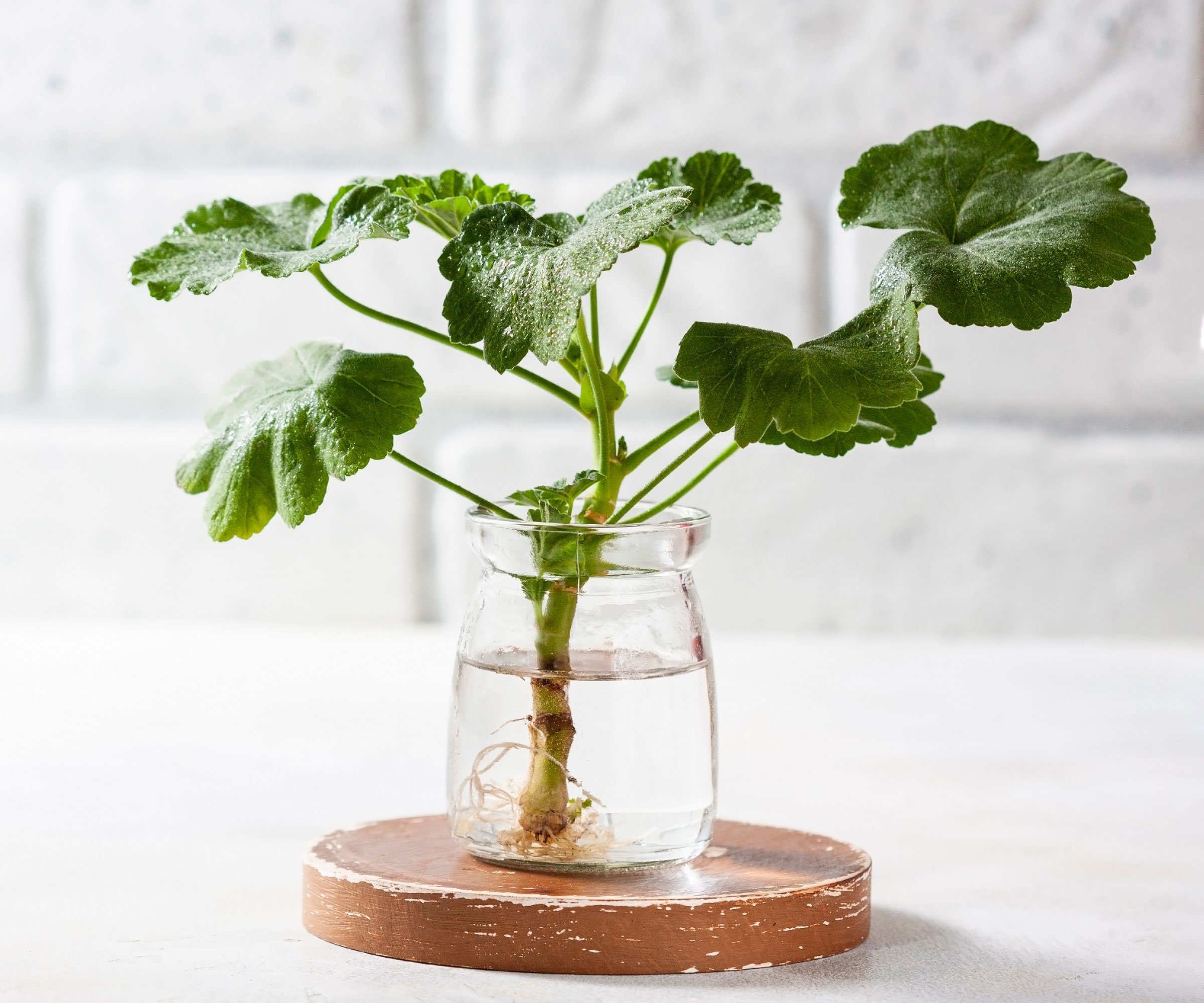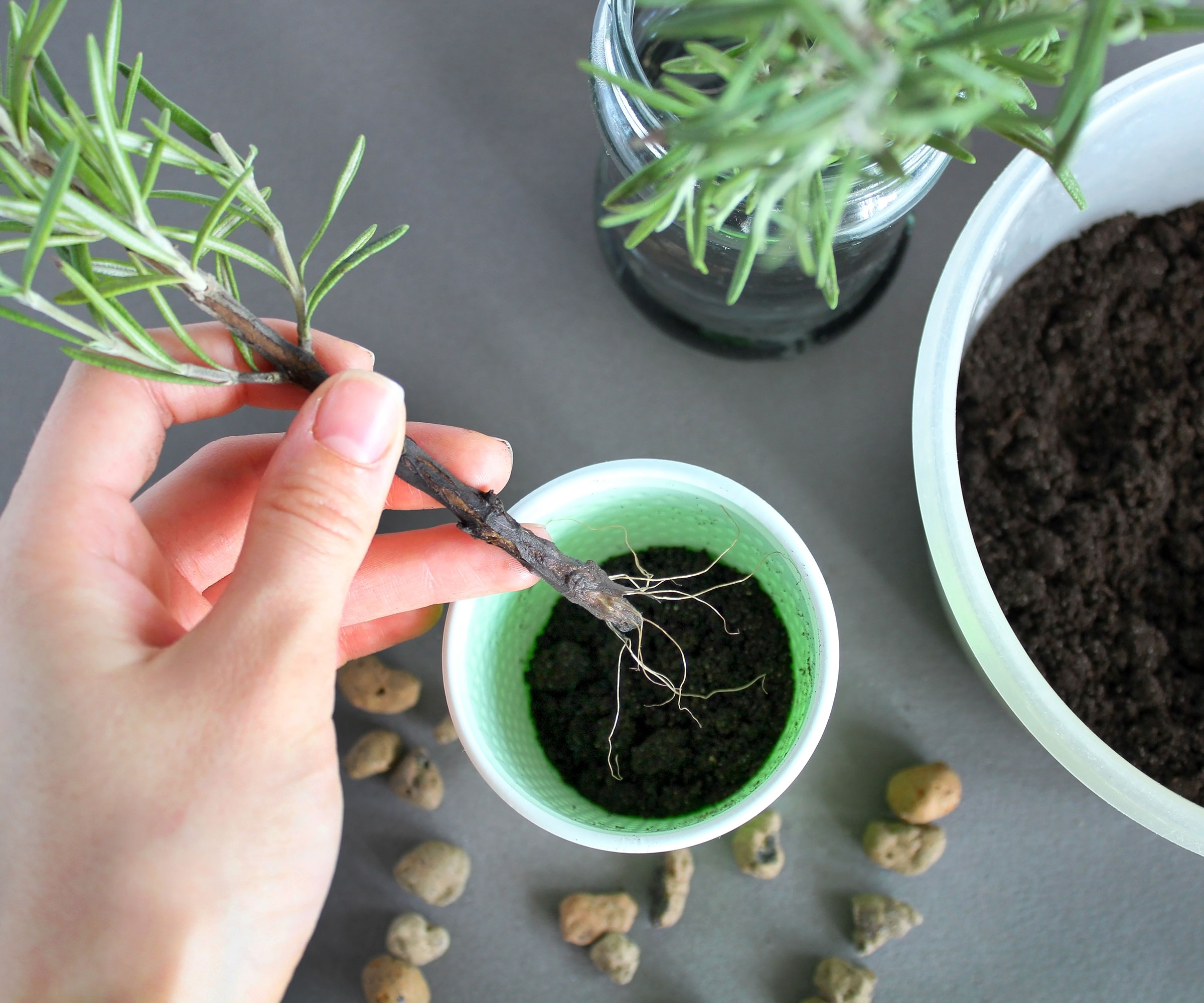Rooting Plants From Cuttings: Easy Plant Propagation
Knowing how to root cuttings liberates your gardening horizons – and also frees up your bank balance! Find out how easy it can be rooting plants from cuttings


Some of the best plants you'll ever grow are free – and the best way to get free specimens is by rooting plants from cuttings of those you know you can grow. If you have a favorite plant, it is often quite easy to propagate it and make a duplicate for your collection.
Of course, you can propagate plants from seed, but there are other propagation methods. These include stem cuttings, root cuttings and air layering. Propagating using cuttings depends upon the type of the plant and may require a rooting hormone.
Many common plants can be propagated from a leaf or stem. Plant cuttings may be rooted in water, soilless medium, with the help of a rooting hormone, or by placing on the surface of the soil. It all depends on the type of plant, but any of these methods can be quick and easy.
Softwood vs. Hardwood Cuttings: Choices When Rooting Plants
Overall, softwood cuttings are the best material to root deciduous plants. They are the still-pliable new growth of woody stemmed plants. Such cuttings should be taken when growth is new in early spring. The plant cuttings should be bendable and soft, taken before the stem gets woody.
Hardwood cuttings come from mature stems that don't bend easily. Certain fruits root best with this older wood, taken in the fall after the leaves have dropped. The main types of hardwood cutting are straight, mallet and heel, with straight being the most common propagation cut.
How to Take Cuttings
There are general rules for rooting a plant cutting but it does vary from plant to plant. Cuttings from tropical houseplants are often simply stripped of the lower leaves and rooted in water. Those that are woodier require different methods. It is a good idea to know which type of rooting method will work for your plant. If you don’t, try each method to see which works. Here are the basic steps required to get the best stem cuttings:
- Use sharp, clean implements. Sterilize scissors or pruners before making a cut. This will ensure no pathogens pass into the parent plant or cutting. Clean cuttings have the best chance of rooting well. The cutting itself should also be healthy, and free of pests and pathogens.
- Cut above a growth node on the plant. This is often where roots will form. Every species is different, but on average you want a cutting that is at least 4in (10cm) long but no longer than 6in (15cm).
- Make sure the plant you take a cutting from is well watered, so the stems are moist. The cells in the tissue need moisture to begin knitting together and creating a root system, but the cutting cannot remain wet or it will rot. Desiccated tissue will not provide good root cells.
- Take softwood cuttings in spring, and hardwood cuttings in fall.

How to Root Cuttings
Many softwood cuttings will simply root in tap water. For sensitive plants, dechlorinated water is best. No rooting hormone is necessary for this method. Other plants may want a special medium, require callusing prior to planting, or need rooting hormone to encourage the necessary growth.
Gardening tips, videos, info and more delivered right to your inbox!
Sign up for the Gardening Know How newsletter today and receive a free copy of our e-book "How to Grow Delicious Tomatoes".
1. Rooting Cuttings in Water
Rooting plants in water is by far the simplest method of propagation. Common houseplants can often be rooted in this manner. In early spring, take the cutting from new plant material that grew that season. This may be herbaceous material or softwood. Make the cut just beneath a node or where leaves or buds join the stem.
Remove any flowers, fruit or flower buds. Remove half the lower leaves. Place the cut end in just enough water to cover the cut. Change the water frequently so pathogens don’t develop. Once the cutting has rooted, plant it in the appropriate medium.
2. Rooting Cuttings in Soil
To root cuttings in soil, take the cutting in the same manner as those that root in water. Some plants will benefit from dipping the cut end in a rooting hormone of some kind. Generally, these are woodier plants. Shake off any excess hormones.
Dip a pencil into the pre-moistened mixed medium and insert the cut end of the stem. The media ingredients may vary, but a half-and-half mix of perlite and peat moss is a good choice for most plants. Gently push the prepared medium around the cutting. If any leaves touch the medium, trim them back. Place the container in a clear bag and move to a warm location with indirect light.
Check the planting medium every few days and water it enough to keep it damp. If condensation builds in the bag, remove it and let it dry out. Do not let water collect inside the bag. After weeks or months, depending on the variety of plant, roots should form. At this point, you can pot up the new plant into a permanent container.

How to Plant Rooted Cuttings
Newly rooted cuttings need to be treated gently. Do not plant them when they are stressed, such as when they are dry or when it is too hot. Transplant them in the morning or evening when temperatures are cooler and the light is not too bright.
Always plant rooted cuttings in the same type of medium in which the parent plant grew. New plants that will go outside into garden beds shouldn’t be planted outdoors for a season. Grow them in a large enough container for one year before planting them in garden soil.
Top Tips for Success in Rooting Plants
- Healthy plants are crucial to success in rooting cuttings. The time of year the cutting is taken is important, but so is the time of day. Take cuttings when the plant is least stressed, such as morning or evening.
- For cutting propagation, make sure the parent plant is not dry, diseased, or infested. Keep enough leaves for the plant to perform photosynthesis.
- Plants in water should have the water changed every few days. Those in plastic bags need to breathe occasionally. Avoid overwatering plants that are rooting in soil.
- If you’re using rooting hormone, store it in a cool, dark location. Avoid using an overly rich planting medium like compost. Instead, select a sterile, well-draining, low-nutrient mixture.
Frequently Answered Questions
Should I Use a Rooting Hormone?
Rooting hormone isn’t necessary on every plant, but it may increase the chances of rooting and can speed up the process. They are made up of a plant hormone called auxin which stimulates root cell growth. They also carry a chemical that prevents rotting.
Many gardeners swear by using a homemade root treatment with honey. Dip the cut end in honey and similar results may occur. You can also use aloe vera gel and cinnamon powder as alternatives to rooting powder.
Should I Cover My Cuttings?
Covering cuttings has several benefits. It protects them from wind and drafts, keeps the soil moist, prevents insects and pathogens from invading the cutting, and acts as a greenhouse, warming the container and medium. While not necessary for many plants, covering the cuttings may help to speed up the rooting process.
A clear, plastic bag is one option, but an empty, clean milk jug with the bottom cut out will work as well. You can also use glass cloches to cover cuttings. When using a covering, make sure excess moisture is not developing inside. The covering can be taken off gradually after the new little plant has rooted – this will get it used to ambient conditions prior to transplanting it.

Bonnie Grant is a professional landscaper with a Certification in Urban Gardening. She has been gardening and writing for 15 years. A former professional chef, she has a passion for edible landscaping.